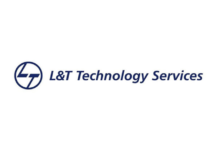
As we navigate the complexities of an ever-evolving digital landscape, this dynamic duo not only fortifies our defences but also empowers us to proactively stay ahead of emerging threats.
“India’s rapidly growing digital ecosystem has proved to be a boon to its economy and is estimated to contribute over 20% to the country’s GDP by 2026. However, with digital evolution, India has also emerged as the most targeted country in terms of cyberattacks, accounting for 13.7% of all attacks worldwide. Indian government agencies witnessed a 95% increase in cyberattacks in 2022, as compared to the previous year.
We have recently released a joint Threat Report in collaboration with DSCI that delves into the geographic and sectoral impact of cyber threats, shedding light on the top states, cities, and industries targeted throughout the year. From our analysis, it’s evident that no region or sector is immune to the reach of these malicious attacks. This first-of-its-kind India-centric report brings actionable insights based on data from 8.5 million endpoints and 400 million detections. Industries including the automobile supply chain, government, and education sectors have emerged as the most vulnerable, followed by power and energy, hospitality, healthcare, logistics, and other industries.
Our team of experts at Seqrite Labs, the country’s largest malware analysis lab, has observed a notable increase in Trojans and Infectors, with 25% of attacks originating from malicious links. In the mobile sector, where the Android operating system held a dominant 71% market share, there were on average 3 attacks per device per month observed on 0.5 million devices, which were covered in the research. G20-related hacktivist attacks on public and private websites raised concerns, a trend expected to continue around major events in 2024 with Indian general elections and global events like the Olympics being planned in the year ahead. Advanced threats like AI-powered malware, “living off the land” binary (LoLBins) attacks, and Hactivist-fueled campaigns are on the horizon. Deep Fakes, Vishing, dating app scams, and ransomware will continue to exploit vulnerabilities in the cybersecurity supply chain.
While the misuse of AI’s potential for phishing and spear-phishing breaches exists, its integration into cybersecurity solutions offers immense promise in mitigating the risks posed by such attacks. Adaptive learning allows systems to evolve with threats, continuously refining models for improved accuracy and effectiveness.
With this and more, we stand committed to simplifying cybersecurity for enterprises and government organizations by providing comprehensive and innovative solutions that are powered by state-of-the-art threat intelligence and playbooks backed by world-class service provided by best-in-class security experts.” said Vishal Shalvi, Chief Executive Officer, Quick Heal Technologies Limited.
“As we navigate the ever-evolving landscape of cybersecurity, it’s crucial to reflect on the lessons learned in 2023 to fortify our defenses in 2024. Our commitment to staying ahead of cyber threats drives us to embrace adaptive learning and statistical analysis as powerful tools in our arsenal. By continuously learning from the evolving threat landscape, we empower ourselves to predict, prevent, and respond to cyber threats with unparalleled precision. In 2024, let us not only anticipate the challenges that lie ahead but also leverage cutting-edge technologies to enhance cybersecurity resilience, ensuring a safer digital future for all.” Raj Sivaraju, President APAC, Arete IR LLP
As we navigate the complexities of an ever-evolving digital landscape, this dynamic duo not only fortifies our defences but also empowers us to proactively stay ahead of emerging threats. By embracing continuous learning and leveraging the insights derived from statistical analysis, we not only safeguard our digital fortresses but also lay the groundwork for a secure and adaptive cybersecurity ecosystem as we forge ahead.
Do Follow: CIO News LinkedIn Account | CIO News Facebook | CIO News Youtube | CIO News Twitter
About us:
CIO News, a proprietary of Mercadeo, produces award-winning content and resources for IT leaders across any industry through print articles and recorded video interviews on topics in the technology sector such as Digital Transformation, Artificial Intelligence (AI), Machine Learning (ML), Cloud, Robotics, Cyber-security, Data, Analytics, SOC, SASE, among other technology topics.





